Everyone knows Banksy. Everyone loves Banksy.
One of the most notorious and most creative street artists working today, his (her?) secret identity, dark humor, and social commentary makes for instant engagement when it comes to your students.
But, the world of street art and graffiti is much more vibrant and much more profound than a single artist.
Earlier this week, Los Angeles teacher, Sara Gaechter, was on Art Ed Radio to talk about how she uses graffiti in her classroom. To continue that conversation, she helped me put together a list of some of her, and her students’, favorite graffiti artists below. This wide-ranging and diverse group is an eclectic mix of styles, techniques, commentary, and artistic voices, and your kids are sure to find something they love.
Below are 12 graffiti artists sure to engage and inspire your students.
Shepard Fairey
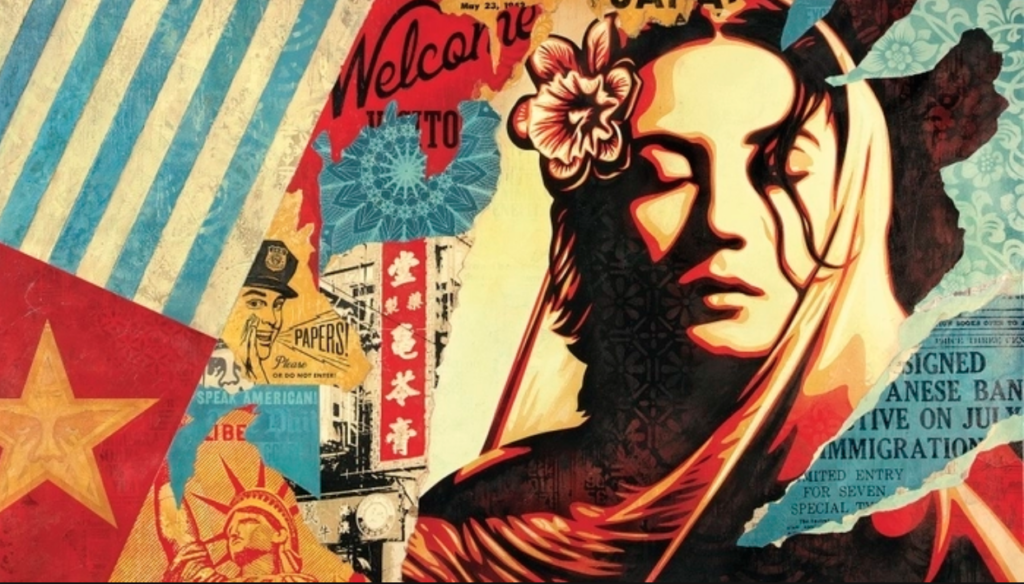
Shepard Fairey, like Banksy, is a well-recognized artist in pop culture, thanks in part to his clothing line, OBEY. Fairey’s work is sometimes political, and looking at the work provides students with an opportunity to share their viewpoints and worldview while analyzing how the work communicates his stance. Studying this work also gives students an opportunity to analyze the power of images.
Website: https://obeygiant.com
Swoon
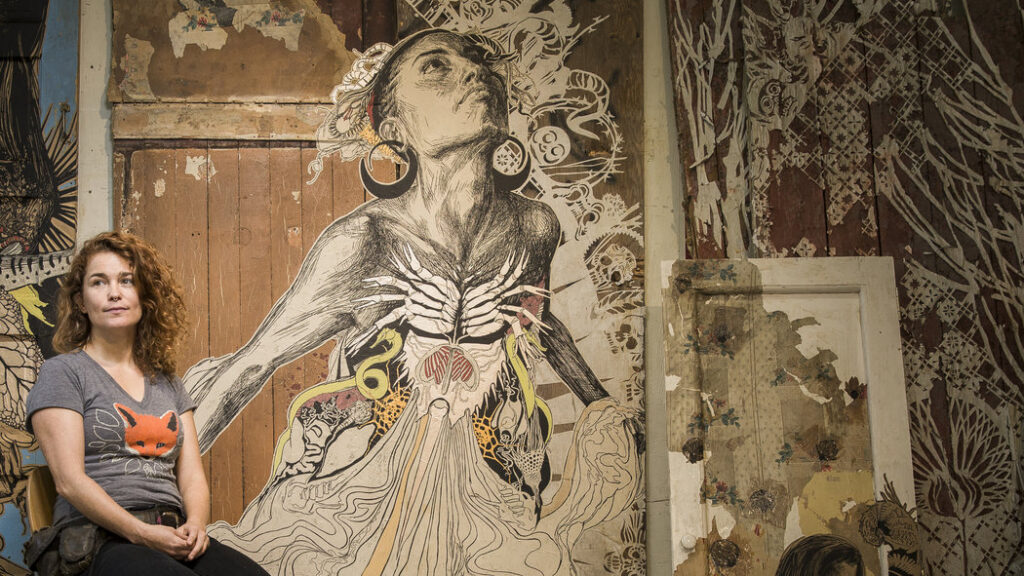
Swoon’s work bridges people’s perceptions between street art and fine art. Her intricately stenciled portraits are not what people normally expect when they think of street art, but Swoon shows there are no rules when it comes to this type of artmaking
Website: https://swoonstudio.org
WRDSMTH
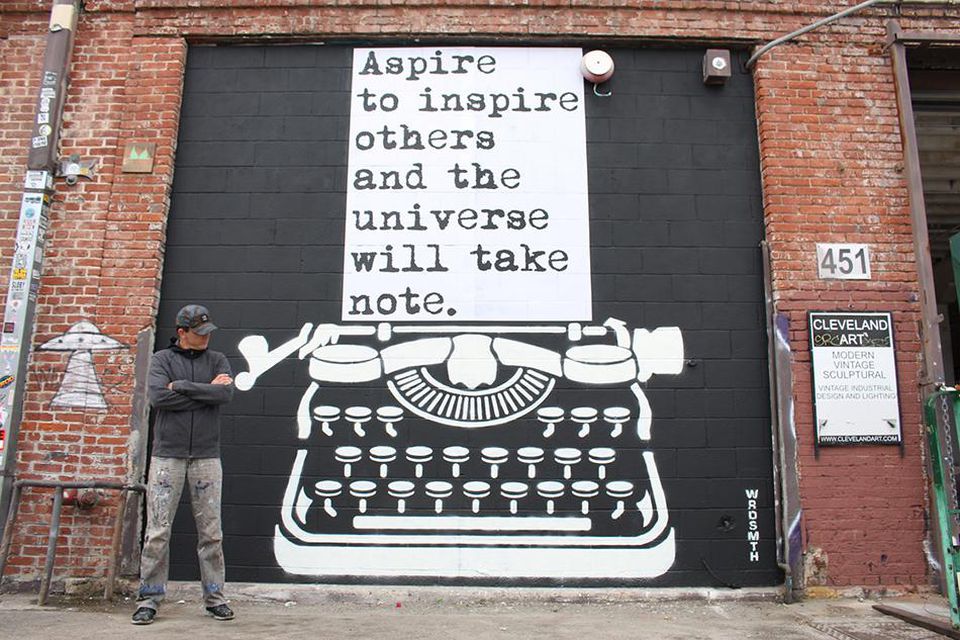
WRDSMITH is another street artist who is pushing the definition of what can be considered street art. In interviews, WRDSMITH will describe himself as an author first and an artist second. Seeing this gives students the opportunity to develop literacy artistically. Kids who struggle with visual concepts are offered an opportunity to create text-based work because who says words can’t be an artistic medium?
Website: https://www.wrdsmth.com
Keith Haring and Jean-Michel Basquiat
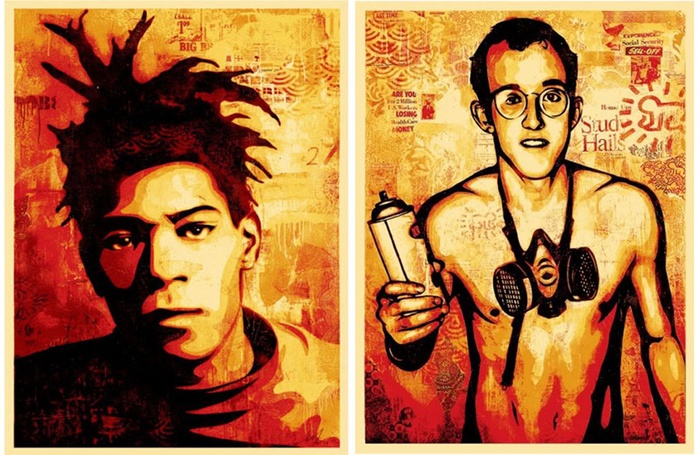
“When I teach graffiti and street art, I often teach Keith Haring and Jean-Michel Basquiat together,” Gaechter said. “Not to minimize their art historical importance, but these two are well juxtaposed, and students experience the added bonus of making connections between their living and working relationships.”
Both artists had humble beginnings in graffiti writing and the graffiti world, then escalated to fine art fame very quickly. Students can compare and contrast how these two artists developed throughout their artistic careers.
Websites: http://www.haring.com and http://basquiat.com
FAILE
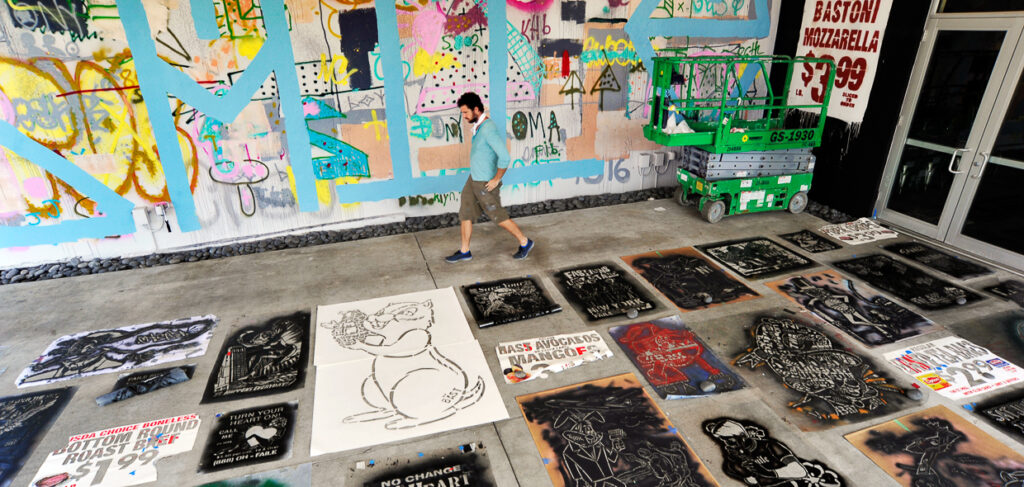
FAILE is a street art and graffiti collaboration whose graphic and assembled works are eye-catching and engaging. FAILE have used a wide range of media to create their works, many of which deal with themes of comparison, juxtaposition, and fragmentation. Using techniques to mimic a collaged look, they bring in imagery that has students looking at their own biases of what makes art “high” or “low,” and why the artists composed the fragmented pieces. Many of the images FAILE uses are directly appropriated from popular culture, and students enjoy the treasure hunt for recognizable images.
Website: http://www.faile.net
Invader
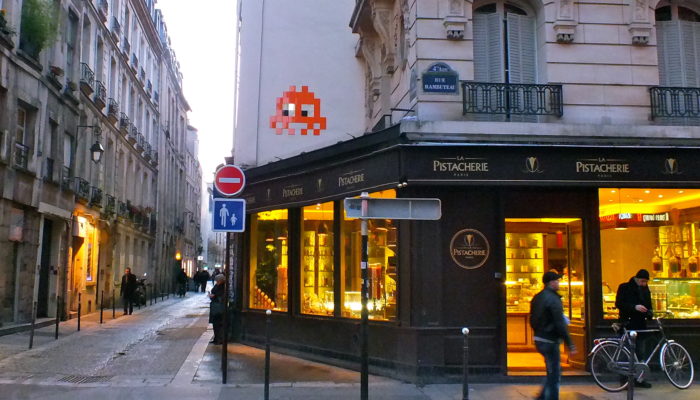
Invader’s 8-bit video game style and use of tile installations make his work unique and immediately recognizable. Invader’s heavy use of social media makes him easy to track as he travels the world putting up pieces, and students enjoy being along for the ride. Due to his wide range of subject matter, students easily find images they can relate to and appreciate
Website: https://www.space-invaders.com/home/
RETNA
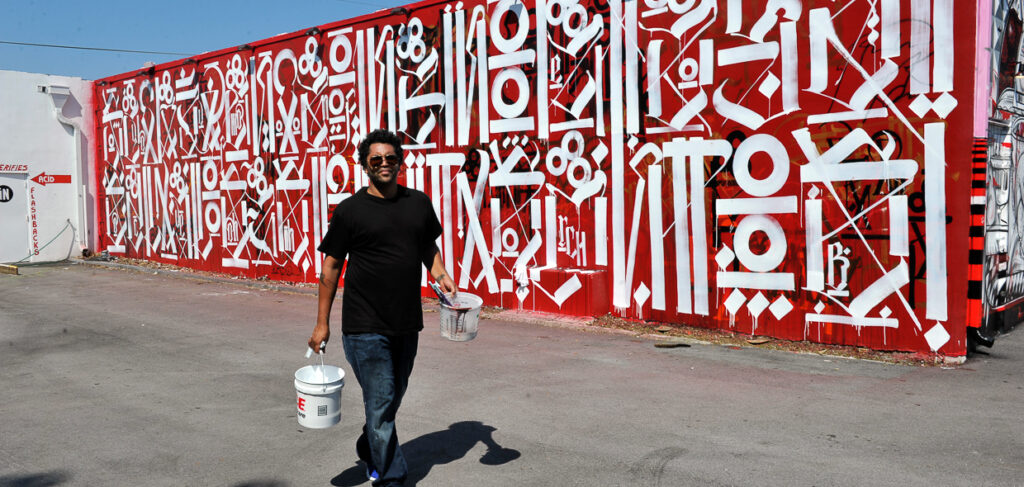
RETNA is another contemporary street artist whose work is easily identifiable to students. His work incorporates a unique script he developed from multiple different letterforms, and his work is infiltrating popular media in fashion and album artwork.
Website: http://www.redeyeretna.com
TAKI 183/CORNBREAD
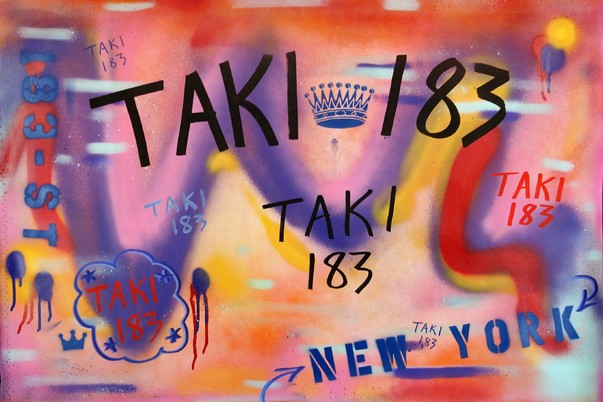
Looking at two of the first documented graffiti writers, TAKI 183 and CORNBREAD, gives students an opportunity to examine the roots of graffiti and street art. While studying these two artists, students can think about their own identity and how they would represent themselves given a chance to develop a tag name.
Websites: TAKI 183 and CORNBREAD
Lady Aiko
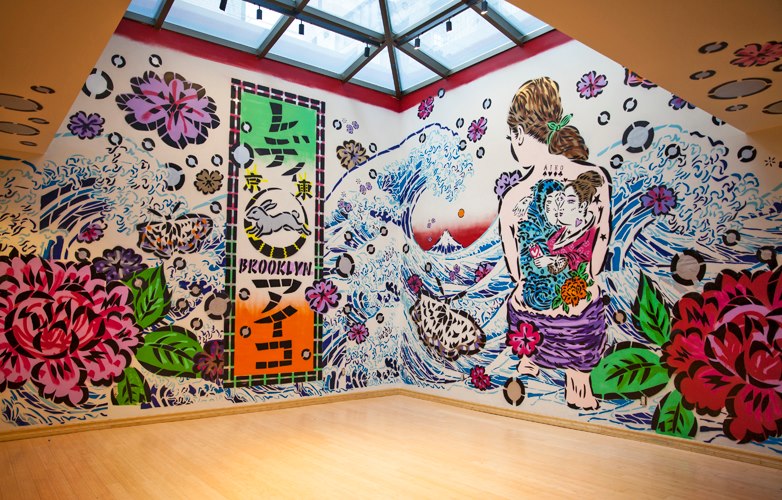
Lady Aiko’s pieces are a prime example of the method of stenciling. Having worked as an apprentice for Takashi Murakami, and later being a founding member of the FAILE collaborative, Lady Aiko’s independent work reflects her pop and contemporary art background. As one of the few prominent female street artists, she discusses ideas of femininity and feminism in her work.
Website: http://www.ladyaiko.com
Davia King

Davia King’s large-scale spray-painted murals discuss the theme of human connection. King’s loose style of drawing with spray paint demonstrates that beautiful art can be improvisational and low risk, which is always a good example to provide students who are building their artistic self-confidence.
Website: http://daviaking.com
Street art is a diverse, unique art form. Banksy is a great place to start when introducing street art to your students, but your introduction shouldn’t end there. Use this list to find new artists to engage and inspire your students as they learn about street art and graffiti!
Who are your own favorite street artists?
Which of these artists do you think will elicit the best response from your students?
Magazine articles and podcasts are opinions of professional education contributors and do not necessarily represent the position of the Art of Education University (AOEU) or its academic offerings. Contributors use terms in the way they are most often talked about in the scope of their educational experiences.





